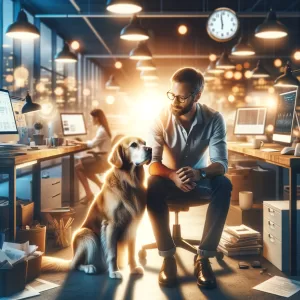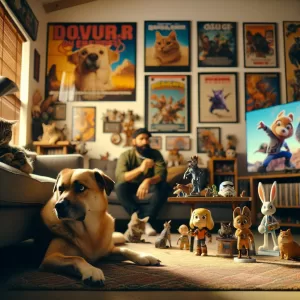Zoos, for many of us, were our first exposure to the dizzying diversity of the animal kingdom. They offered a safe haven to experience the majesty of a tiger, the playfulness of monkeys, or the gentle elegance of a giraffe. But as we’ve grown older, so too have our perceptions and understanding of these complex institutions. This exploration seeks to navigate the paradoxical world of zoos – sanctuaries of conservation and subjects of critique – in the hopes of fostering a balanced perspective on their role in animal conservation.
Chapter 1: A Historic Refuge: The Evolution of Zoos
Zoos have come a long way from their origins as symbols of royal power and exotic menageries. Today, they serve as the frontline of conservation efforts for hundreds of endangered species worldwide. Their dedication to research, breeding programs, and education has ushered in a new era of zoological parks. Far from being merely ‘animal prisons’, modern zoos often recreate the natural habitats of their residents, promoting healthier, more natural behaviors.
Chapter 2: Encapsulating Eden: The Conservation Role of Zoos
As the planet grapples with unprecedented rates of habitat loss and species extinction, zoos have stepped up to the plate. Their commitment extends from captive breeding of endangered species, veterinary research, to rehabilitation and release programs. Some animals, like the Arabian Oryx and California Condor, owe their continued existence to such concerted efforts by zoos. Zoos also act as ‘arks’, housing species that are extinct in the wild, thereby preserving the genetic diversity vital for future reintroductions.
Chapter 3: The Classroom Under the Sky: Zoos as Educational Powerhouses
Perhaps the most visible role of zoos is their function as educational platforms. Encountering animals face-to-face is a powerful experience that can inspire empathy, wonder, and a deeper understanding of nature. This emotional connection can be a strong catalyst for conservation actions. Zoos host school field trips, provide curriculum-based educational resources, and conduct public awareness campaigns about environmental conservation.
Chapter 4: Zoos Through a Critical Lens: Ethical Concerns and Criticisms
Despite their laudable roles, zoos are not without controversy. Critics argue that no matter how well-designed, a zoo cannot fully replicate an animal’s natural habitat. They point out that some animals display stereotypical behaviors suggestive of stress and poor mental health. There are also concerns about the message that zoos convey – that it is acceptable to cage animals for our amusement. Critics push for more emphasis on in-situ conservation (protecting animals in their natural habitats) rather than ex-situ conservation (captive breeding and reintroduction).
Chapter 5: The Spectrum of Quality: Not All Zoos Are Created Equal
It is essential to recognize that zoos exist on a spectrum of quality. There are well-run, accredited zoos dedicated to conservation and animal welfare, and there are poorly run, unethical institutions more akin to animal prisons. The former work with global conservation organizations, follow stringent welfare standards, and make meaningful contributions to conservation. The latter are primarily profit-driven, with little regard for animal welfare or conservation. The conversation about zoos often fails to recognize this distinction, which is crucial for a balanced perspective.
Chapter 6: Zoos of the Future: Innovations and Improvements
As we look towards the future, zoos are continuously evolving. Innovative designs are allowing for more naturalistic, spacious habitats that promote animal well-being. Zoos are also leveraging technology to educate visitors in engaging, interactive ways. Collaboration is increasing between zoos and in-situ conservation organizations, creating a complementary approach to conservation. For zoos to remain relevant and ethical, they must continue to adapt and improve, aligning their work with the core values of animal welfare and conservation.
Navigating the Paradox: The Role of Zoos in Animal Conservation
The dichotomy of zoos can feel overwhelming, a tangle of benefits and criticisms that seem irreconcilable. But perhaps this tension is a necessary catalyst for change. The conservation roles of zoos, their educational impact, and their potential for improvement are undeniable. Yet, it is critical that we remain aware of their ethical shortcomings and continue to demand higher standards. By engaging with this conversation, we can contribute to shaping the zoos of the future – institutions that not only house animals but also inspire a generation of conservationists. For the love of our planet’s diverse creatures, the debate must continue, driving zoos towards an era where conservation and welfare walk hand in hand.








